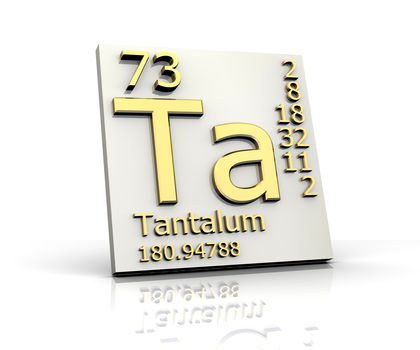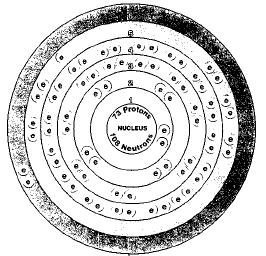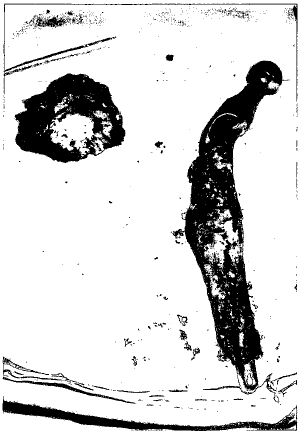TANTALUM


Overview
Tantalum is a transition metal in Group 5 (VB) of the periodic table. The periodic table is a chart that shows how chemical elements are related to one another. Tantalum is one of the most inert metals known. An inert material is one that does not react with most other chemicals. Most metals, for example, dissolve in acids, but tantalum is not affected by acids or other strong chemicals. For this reason, tantalum is used to make chemical, medical, and dental equipment.
Credit for the discovery of tantalum goes to Swedish chemist and mineralogist Anders Gustaf Ekeberg (1767-1813). Ekeberg announced his discovery in 1802. However, chemists were uncertain about Ekeberg's new element for many years. They believed that another element, niobium, might be present along with tantalum. In fact, it was not until 50 years later that chemists could be sure that tantalum and niobium were really two different elements.
SYMBOL
Ta
ATOMIC NUMBER
73
ATOMIC MASS
180.9479
FAMILY
Group 5 (VB)
Transition metal
PRONUNCIATION
TAN-tuh-lum
Discovery and naming
In 1801, English chemist Charles Hatchett (1765-1847) discovered a new element that he named niobium. A year later, Ekeberg discovered a new element that he named tantalum.
The two names are related. Niobium was named for the mythical daughter of Tantalus, Niobe.
Tantalus was a son of Zeus, the major Greek god. Zeus decided to punish his son for giving the gods' secrets to humans. He forced Tantalus to stand in a vat filled with water up to his chin. Whenever Tantalus bent to take a drink, the water dropped a little lower so he could never get his drink. Ekeberg said that his new element was like Tantalus. When placed in acid, it did not take up (react with) the acid.
Most chemists thought that the two men's discoveries were one and the same. The two elements reacted exactly like each other. They could not see how tantalum was different from niobium. For more than 40 years, the general belief was that Ekeberg and Hatchett had discovered the same element.
In 1844, however, German chemist Heinrich Rose (1795-1864) announced new evidence. He found that tantalic acid (H 3 TaO 4 ) made from tantalum and niobic acid (H 3 NbO 4 ) made from niobium were definitely different from each other. He confirmed that Ekeberg and Hatchett had really discovered two different elements.
Physical properties
Tantalum is a very hard, malleable, ductile metal. Malleable means capable of being hammered into thin sheets. Ductile means capable of being drawn into thin wires. The metal has a silvery-bluish color when unpolished, but a bright silvery color when polished. It has a melting point of 2,996°C (5,425°F) and a boiling point of 5,429°C (9,804°F). It has the third highest melting point of all elements, after tungsten and rhenium. Tantalum's density is 16.69 grams per cubic centimeter.
Chemical properties
Tantalum is one of the most unreactive metals. At room temperature, it reacts only with fluorine gas and certain fluorine compounds. Fluorine, a non-metal, is the most active element. At higher temperatures, tantalum becomes more active. Above about 150°C (300°F), it reacts with acids and alkalis. An alkali is the chemical opposite of an add.
Occurrence in nature
Tantalum ranks about number 50 among elements found in the Earth's crust. It is slightly more common than tungsten, but less common than arsenic. Its abundance is probably about 1.7 parts per million in the earth. The element is most commonly found in the minerals columbite, tantalite, and microlite. It always occurs with niobium.
The only source of tantalum in North America is a mine located at Bernic Lake in the province of Manitoba in Canada. Most of the tantalum used in the United States comes from Australia, Germany, Thailand, and Brazil.
Isotopes
There are two naturally occurring isotope of tantalum, tantalum-180 and tantalum-181. Isotopes are two or more forms of an element. Isotopes differ from each other according to their mass number. The number written to the right of the element's name is the mass number. The mass number represents the number of protons plus neutrons in the nucleus of an atom of the element. The number of protons determines the element, but the number of neutrons in the atom of any one element can vary. Each variation is an isotope.
Tantalum-181 is radioactive. A radioactive isotope is one that breaks apart and gives off some form of radiation. The half life of a radioactive element is the time it takes for half of a sample of the element to break down. Tantalum-181 has a half life of more than one trillion years. It makes up about 0.01 percent of all natural tantalum.
More than a dozen radioactive isotopes of tantalum have been made artificially. None of these isotopes has any commercial application.
Extraction
After tantalum ores are taken from the earth, they are converted to tantalum potassium fluoride (K 2 TaF 7 ). Pure tantalum is then obtained from this compound by passing an electric current through it.
Tantalum is one of the most unreactive metals. At room temperature, it reacts only with fluorine gas and certain fluorine compounds.
Uses
The primary use of tantalum metal is in making capacitors. A capacitor is an electrical device similar to a battery. It can be

Tantalum is also used in many different alloys. An alloy is made by melting and mixing two or more metals. The mixture has properties different from those of the individual metals. Tantalum alloys are used in laboratory equipment, weights for very precise balances, fountain and ball point pen points, and tools that have to operate at high speeds and temperatures.
Another application for tantalum alloys is in medical and dental applications. The metal has no effect on body tissues. It is used in artificial hips, knees, and other joints. Pins, screws, staples, and other devices used to holds bones together are also made of tantalum alloys.
Compounds
A few compounds of tantalum have some important uses. They are as follows:
tantalum carbide (TaC): a very hard material used for cutting tools and dies
tantalum disulfide (TaS 2 ): used in the form of a black powder, it acts as a solid lubricant, like powdered carbon
tantalum oxide (Ta 2 O 5 ): used in the preparation of special types of glass; used in specialized lasers (devices for producing a very bright light of a single color)
Health effects
Tantalum and its compounds are not thought to pose a serious health hazards to humans and animals.
"An alkali is the chemical opposite of an add." You mean "acid"
Regards,
Ronald Hall